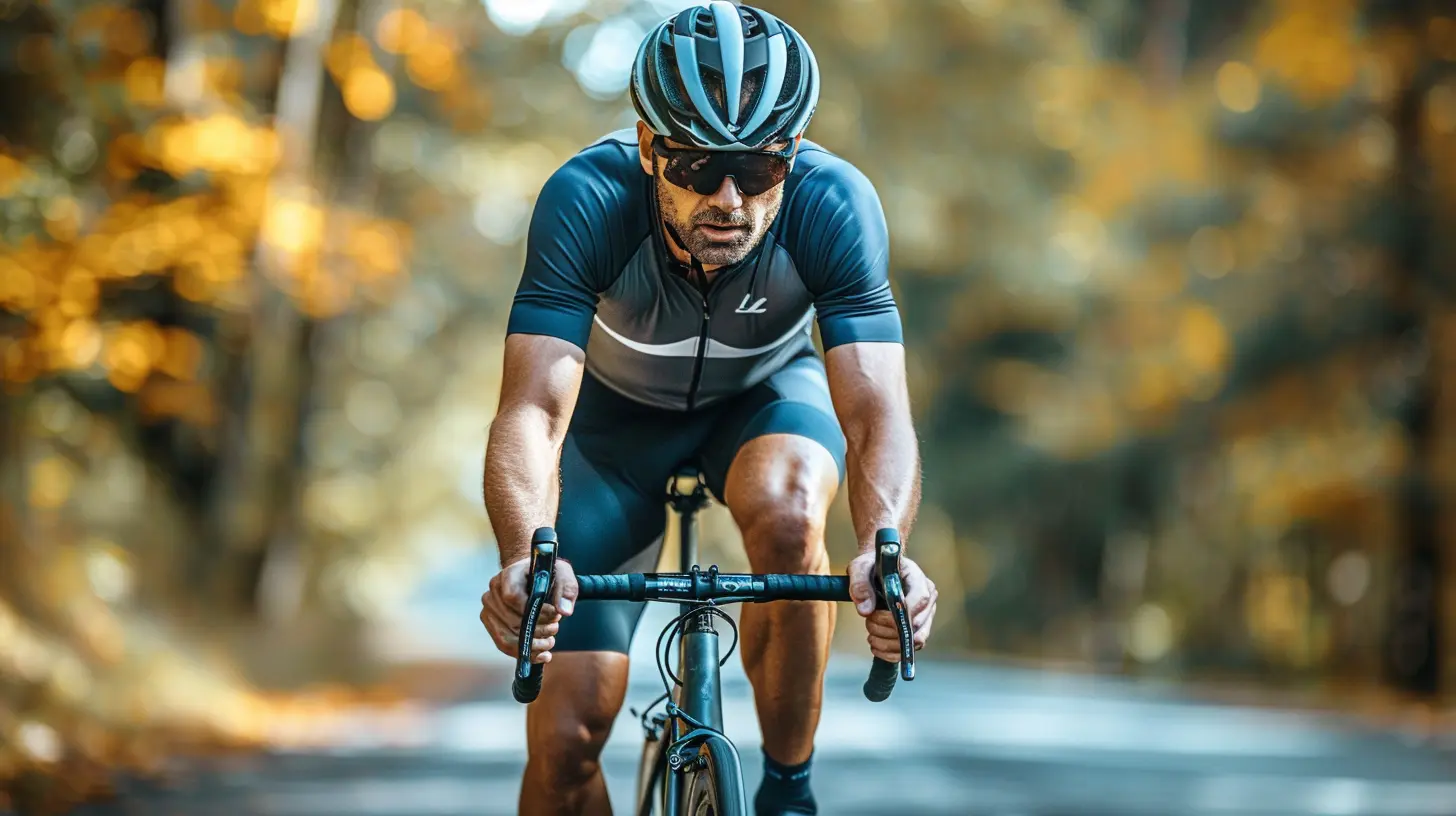Cardio for Cyclists: Improving Endurance and Power
6 October 2025
Cycling is a game of endurance and power. Whether you're tackling long-distance rides, racing up hills, or just trying to keep up with your weekend riding crew, your cardiovascular fitness plays a massive role in your performance.
Sure, logging miles on your bike helps improve stamina, but if you really want to level up, you need to focus on structured cardio training. This can transform the way you ride, making those intense climbs feel easier and helping you maintain speed over long distances.
So, how do you improve your endurance and power through cardio? Let’s break it down. 
Why Cardio Matters for Cyclists
At its core, cycling is an endurance sport. If your cardiovascular system isn’t functioning efficiently, your legs will burn out before you even get the chance to push your limits.Cardio training strengthens your heart, increases lung capacity, and improves oxygen delivery to your muscles. The stronger your cardiovascular system, the longer and harder you can ride without hitting the dreaded wall.
But here’s the kicker—cardio alone won’t make you a better cyclist. It’s about the right kind of cardio. Let’s dive into the best types of cardio training to boost endurance and power. 
The Best Cardio Workouts for Cyclists
Different types of cardio workouts target different aspects of fitness. To become a well-rounded cyclist, you need a combination of low-intensity endurance training, high-intensity intervals, and cross-training.1. Low-Intensity Steady-State (LISS) Training
LISS training is your long, steady ride at a moderate pace—think of it as the backbone of endurance cycling. These sessions improve your body’s efficiency at burning fat for fuel and strengthen your cardiovascular system without overtaxing your muscles.How to Do It:
- Ride at a comfortable pace (60-70% of your max heart rate) for 60-120 minutes.- Maintain a conversational effort—if you’re gasping for air, you’re pushing too hard.
- Aim for 2-3 rides per week at this intensity.
LISS training builds the aerobic base that every cyclist needs for long-distance stamina.
2. High-Intensity Interval Training (HIIT)
If LISS is the foundation, HIIT is the turbo boost. This type of training increases power output, improves anaerobic capacity, and makes climbs and sprints feel easier.How to Do It:
- Warm up with 10-15 minutes of easy pedaling.- Perform short bursts of high-intensity efforts (30 seconds to 2 minutes) at near-max effort.
- Recover with 1-2 minutes of easy pedaling between intervals.
- Repeat for 4-8 rounds depending on fitness level.
- Cool down for 10 minutes.
HIIT sessions don’t need to be long; just 30-45 minutes can deliver significant improvements.
3. Tempo Rides for Strength and Endurance
Tempo rides sit somewhere between LISS and HIIT. You’re not going all-out, but you’re pushing harder than a leisurely ride. This is great for improving your ability to sustain higher speeds over long distances.How to Do It:
- Ride at 75-85% of your max heart rate for 30-60 minutes.- Try to keep the effort steady, like you’re riding at a strong but sustainable race pace.
- Include these once or twice per week in your training schedule.
These rides train your body to ride at higher power outputs without excessive fatigue.
4. Cross-Training for Cyclists
Believe it or not, stepping off the bike occasionally can actually make you a stronger cyclist. Activities like running, swimming, or rowing provide additional cardiovascular benefits while reducing the risk of overuse injuries.Strength training, in particular, is a game-changer for power on the bike. Squats, lunges, and deadlifts help build the leg strength needed to crank out high wattage on climbs and sprints. Aim for at least one or two strength sessions per week. 
Heart Rate Zones: The Key to Smarter Training
Instead of just pedaling aimlessly, tracking your heart rate can help you train efficiently. Understanding heart rate zones ensures you're riding at the right intensity for your goals.Heart Rate Zones for Cycling
1. Zone 1 (Recovery): 50-60% of max HR – Easy effort, great for rest days.2. Zone 2 (Endurance): 60-70% of max HR – Ideal for LISS rides to build stamina.
3. Zone 3 (Tempo): 70-80% of max HR – Where you build sustained power.
4. Zone 4 (Threshold): 80-90% of max HR – Tough but sustainable for short efforts.
5. Zone 5 (VO2 Max): 90-100% of max HR – All-out effort, used for top-end speed.
Training with heart rate zones helps you fine-tune your workouts, ensuring you’re not overtraining or undertraining. 
Tips to Improve Your Cardio as a Cyclist
Improving your endurance and power isn’t just about riding more—it’s about training smarter. Here are a few expert tips to maximize your cardio training:1. Be Consistent
Improving cardio takes time. Stick to a regular training plan, and you’ll see steady progress.2. Progress Gradually
Don't jump straight into high-intensity training if you're new to structured workouts. Build your endurance first, then add in intensity.3. Fuel Properly
Your body needs the right fuel to sustain long rides. Focus on a balanced diet with plenty of carbohydrates, protein, and healthy fats.4. Prioritize Recovery
Training hard is important, but so is rest. Overtraining can lead to burnout and injuries, so schedule recovery days into your plan.5. Listen to Your Body
Not every ride will feel great, and that’s okay. Pay attention to signs of fatigue and adjust your training accordingly.The Bottom Line
Cardio training is a cyclist’s secret weapon for improving endurance and power. By incorporating a mix of LISS, HIIT, tempo rides, and cross-training into your routine, you’ll become a stronger, more efficient rider.Cycling isn’t just about grinding through the miles—it’s about training smart. So, structure your cardio workouts, track your progress, and watch yourself transform into a more powerful cyclist with every ride.
Now, go out there and crush those climbs!
all images in this post were generated using AI tools
Category:
Cardio WorkoutsAuthor:

Everett Davis
Discussion
rate this article
1 comments
Lumen McConnell
This article effectively outlines the importance of cardio for cyclists, emphasizing its role in enhancing endurance and power. The practical tips are straightforward and actionable, making it easy for cyclists at any level to incorporate these strategies into their training. A great resource for those looking to elevate their performance!
October 22, 2025 at 3:27 AM

Everett Davis
Thank you for the positive feedback! I'm glad you found the article helpful and actionable for cyclists of all levels. Happy training!


